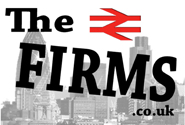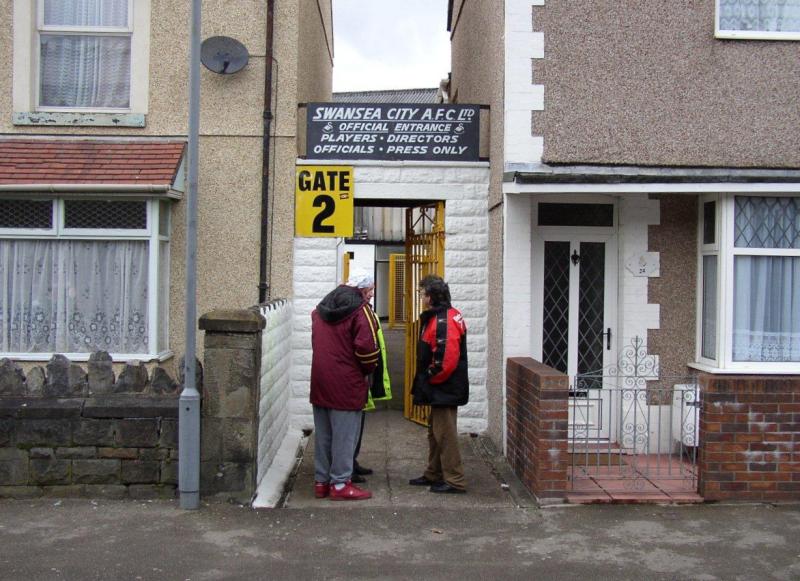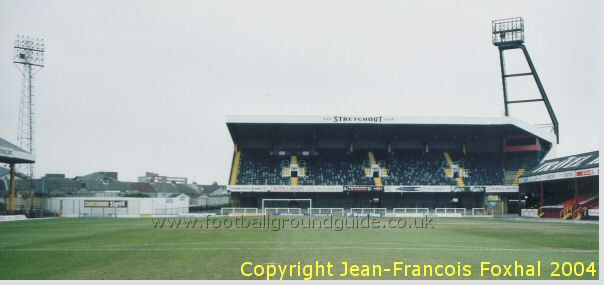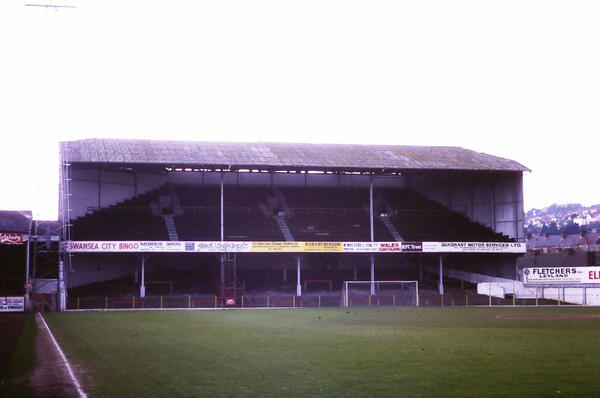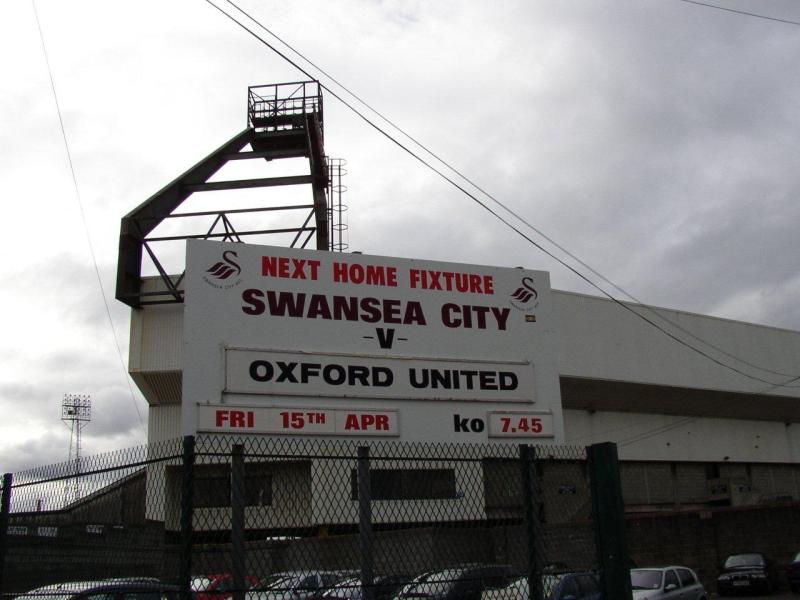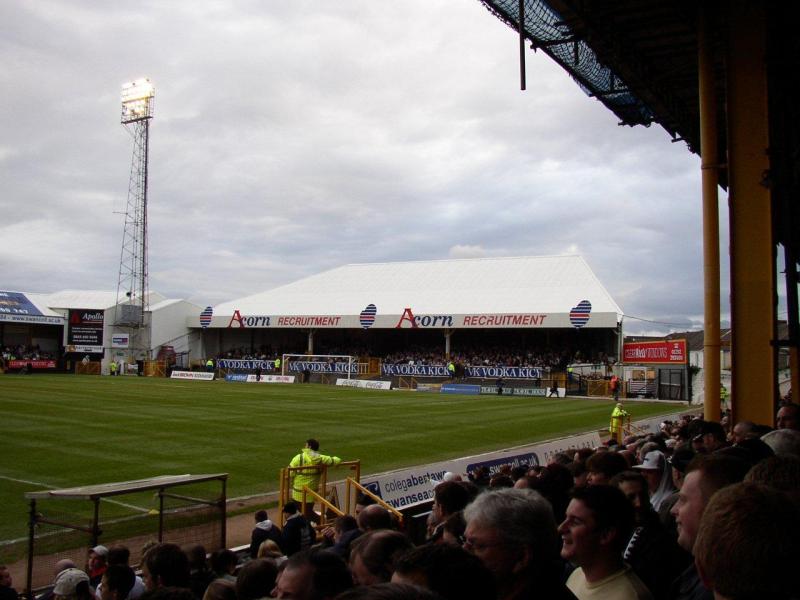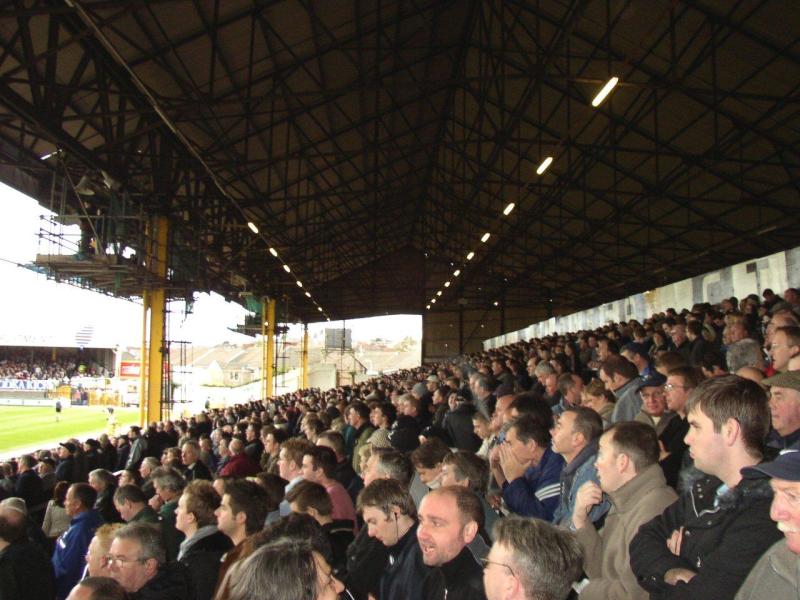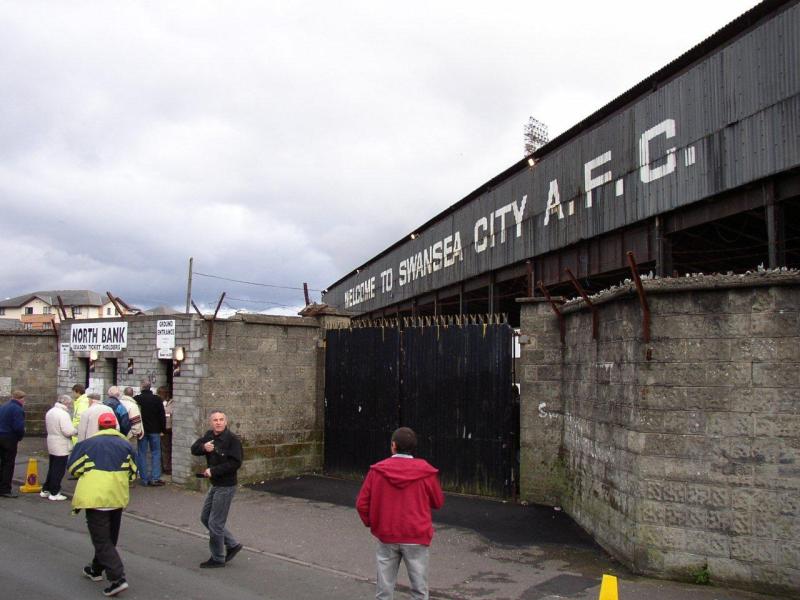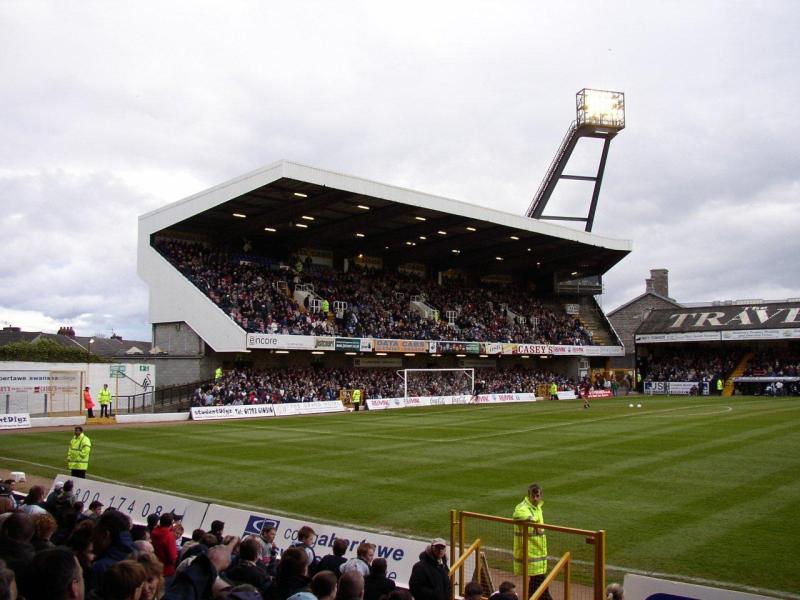Vetch Field: Swansea
The Vetch Field was a multi-purpose stadium in Swansea, Wales. It was used mostly for football matches and was the home ground of Swansea City until the club moved to the newly built Liberty Stadium in 2005. Opened in 1912, the ground held around 12,000 at the time of its closure, but upwards of 30,000 at its peak.
As well as being home to the Swans, the Vetch also hosted games for the Wales national football team, with 18 internationals played at the Vetch between 1921 and 1988.[6] Other sports also found a home at the Vetch, with 8 rugby league matches played there between 1990 and 1999. In 1960, local boy Brian Curvis beat the Australian boxer George Barnes at the Vetch to win the Commonwealth (British Empire) Welterweight title.
The stadium also operated as a music venue, hosting The Who in 1976 and Stevie Wonder in 1984.
The Vetch’s final Football League fixture was a 1-0 win for Swansea over Shrewsbury Town on 30 April 2005. The last ever game of football to be held at the Vetch was the 2005 FAW Premier Cup final, which saw Swansea beat Wrexham 2–1.
The stadium took its name from the flowers that once grew on the site, the Vicia flowers commonly known as Vetches. When the professional football team was formed in the town the land was deemed surplus to requirement by its owners, the Swansea Gaslight Company, so the team moved in.
For the first season players had to wear protective knee guards as the playing service was made up from compacted coal cinders. The stadium had a fairly unusual feature only found at Wembley as well, which was an underpass that allowed pedestrians to walk under the pitch.
The Centre (South) Stand
Originally built in 1912 to house 1,500 spectators, the Centre Stand went through numerous changes before ending up as a stand that ran only 3/4 the length of the pitch, with a family stand at one end, and some wooden bench seating at the other. It was suggested that the gable and clock be moved to the Liberty Stadium.
The West Terrace
The North Bank
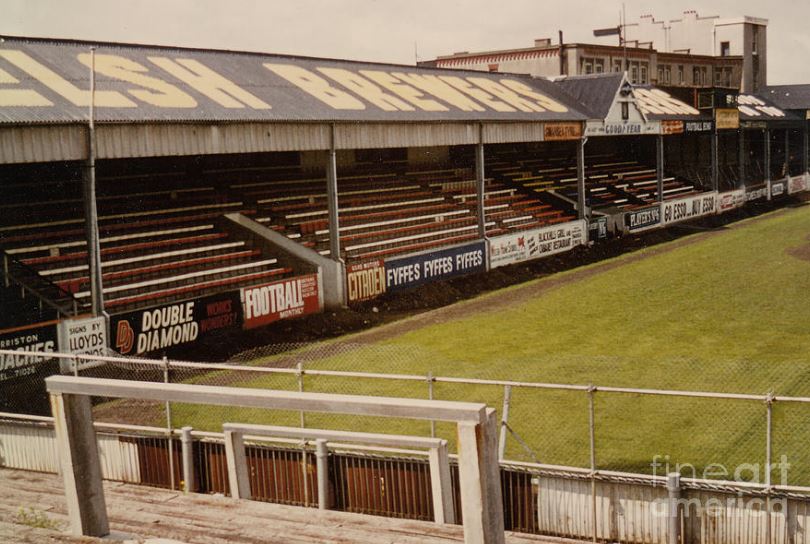
Copyright: http://fineartamerica.com/featured/swansea-vetch-field-north-bank-2-1970s-legendary-football-grounds.html
Originally just a mound of earth with some concrete and railway sleepers on top of it, the ‘big bank’ grew to be the largest area of the ground. During the late 1950s the supporters’ trust paid for a roof to be installed, and during the 1970s and 1980s the Bank became home to the majority of supporters, and the most vocal. Safety concerns reduced its capacity by blocking off a large section at the rear, and following the Hillsborough disaster its safety certificate was again cut, and by the early 21st century it held around 3,500 due to concerns about the front not being covered. The number it could safely hold was increased towards the end of its life, ensuring that the North Bank was filled to capacity for the majority of matches during the final season.
More Photos © Stephan Hoogerwaard
